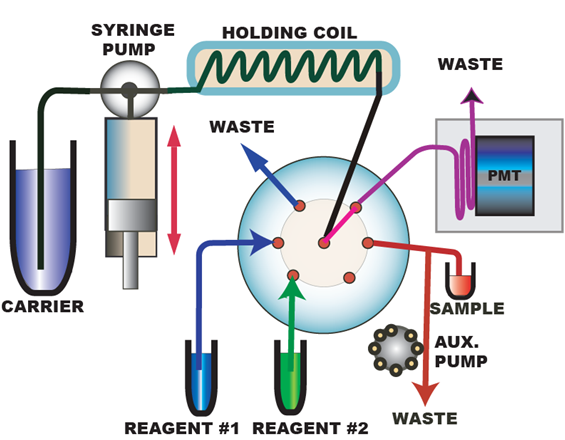Chemiluminescence (CL) is a process producing electromagnetic radiation as a result of a chemical reaction. The radiation may be UV, visible, or near infrared, and the energy is often provided by an oxidant. Since the method does not rely on an external light source, there is no background light, resulting in low background noise and improved limits of detection. Because the light output is transient, the challenge lies in efficient rapid mixing of sample with reagents, short travel time between the mixing point and the detector and in interfacing the detector with the light emitting zone.
Chemiluminescence
2.3.11.
So far, flow based chemiluminescence systems have used a conventional FI platform with external, mostly photomultiplier (PMT) detection. While a majority of chemiluminescence assays is being developed in FI format ( see Hansen’s Database), it is time to recognize advatages of flow programming and in SI format the reagent and sample economy.
An excellent example of st6op flow approach is the assay of anti-inflammatory drug indomethacin is based on its reaction with tris(2,2-bipyridyl)ruthenium(III) (Ru(bipy)3 (3+) in the presence of acetate. Sample throughput is 180s/hr and sample volume is 15 mL. (Mervartova, Polasek, Catalyud 2007) This work is one of many applications of SI- and FI-based chemiluminescence to pharmaceutical analysis, recently thoroughly reviewed.
Mervartova K., Polasek M., Calatayud J.M.: ACA (2007)
Mervartova K., Polasek M., Calatayud J.M.: Journal of Pharmaceutical and Biomedical Analysis 45 (2007) 367–381)










